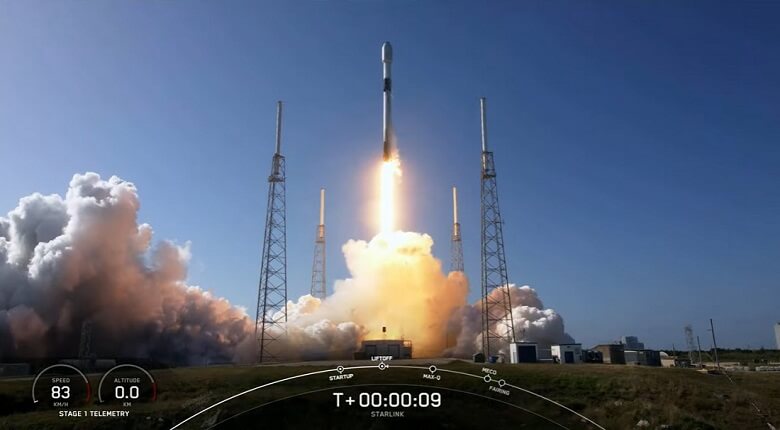Multiple outlets reported that SpaceX is ready to launch another large group of its Starlink internet satellites to orbit. The launch was reportedly scheduled for Wednesday, January 11, and people around the world can watch the live event. A Falcon 9 rocket will carry 51 internet satellites of SpaceX’s Sartlink. The rocket is expected to lift off on Wednesday at 7:48 p.m. local California time and 10:48 p.m. EST.
The liftoff operation will take place from Vandenberg Space Force Base, California. However, the launch event coverage will supposedly start around 5 minutes prior to liftoff. You can watch it live at Space.com or directly from the company’s website. It is noteworthy that the launch operation was actually projected for Monday night, January 9, 2023.
However, SpaceX missed the targeted date due to critical weather conditions. The company took more time and examined data from the upper stage of Falcon 9. So, SpaceX rescheduled the launch event for Wednesday, January 11, 2023. The first stage of the Falcon 9 will come back to Earth within just under 9 minutes of its launch. But it depends on the perfection of all factors involved in a rocket launch.
Drone-Ship of SpaceX in the Pacific Ocean
The rocket will touch down on the SpaceX drone ship, stationed in the Pacific Ocean. EverydayAstronaut.com reported that it would mark the 9th launch and landing for this specific booster. However, the upper stage of Falcon 9 will push the Starlink satellites to low Earth orbit. SpaceX confirmed the rocket will deploy all 51 satellites into orbit after 29 minutes of its liftoff.
Keep in mind that Starlink is SpaceX’s satellite formation for broadband communication. This star formation currently features at least 3,300 active & operational satellites. Meanwhile, the number is randomly increasing amid its Wednesday liftoff plan and could become truly astonishing. SpaceX applied for a grant to deploy around 30,000 Starlink satellites but got approval to launch only 12,000.
Falcon 9 Deployed 40 One-Web Internet Satellites
The successful Starlink satellites launch would mark the 2nd in just 3 days for SpaceX. Meanwhile, a Falcon 9 also deployed 40 One-Web internet satellites on Monday night, January 9, 2023. The launch operation was conducted from Cape Canaveral Space Force Station, Florida. The Starlink satellites of SpaceX are the most advanced and well-reputed spacecraft around the world.
However, the orbit currently sustains more than 3,000 Starlink satellites and SpaceX has planned to deploy many more. These satellites are mainly designed to provide broadband internet to remote or difficult-to-reach areas. Keep in mind that there are various different already in use and planned objectives for the inflammatory star formation.
The Fault in Our Stars and Starlink Name
Meanwhile, Starlink satellites are constantly appearing in headlines for the steep number of launch operations SpaceX operates each year. Satellites have significant impacts on astronomy and the Russian invasion of Ukraine. There is a plethora of outlandish facts related to Starlink. CEO of SpaceX Elon Musk earlier mentioned that the word “Starlink” came from John Green’s 2012 novel.
John Green’s novel was “The Fault in Our Stars”. Musk explained in 2018 and said The Fault in Our Stars brought motivation and inspiration to extract the Starlink name. Green’s novel moves around 16 years old Hazel Lancaster (diagnosed with terminal cancer). Moreover, Hazel met a teenager Augustus (diagnosed with cancer), and ultimately, they fell in love.
Linux OS Developed as an Open-Source in 1991
The novel effectively presents the fact that emotional stress is steady in human presence. But we can at least have the option to share their pain. The resources page of SpaceX says Starlink satellites use the open-source Linux operating system. It is noteworthy that Linus Torvalds (a Finnish software engineer) developed the Linux operating system in 1991.
Torvalds developed a free and openly shared operating system with compatibility for users’ specific computer hardware. Keep in mind that Linux is simple to customize which makes it feasible for unique use scenarios like Starlink satellites. Moreover, Linux-based operating systems can make use of a worldwide warehouse of open-source tools and programs. It enables professionals to rapidly prototype new software and hardware.
